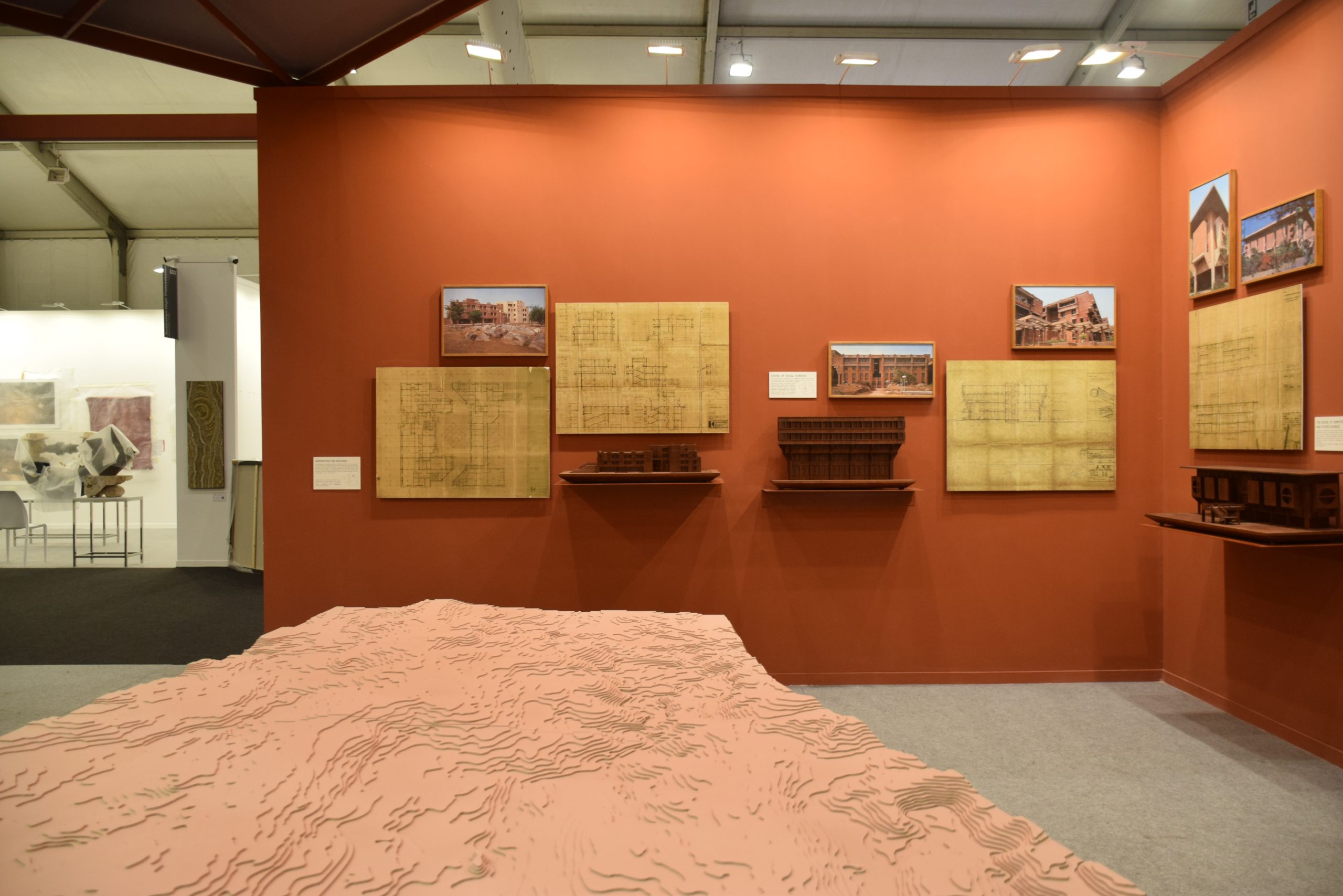
PLANNED: JNU masterplan at the India Art Fair. The university campus was built taking Delhi’s climate and ecology into account
Jawaharlal Nehru University’s ‘Masterplan’ was unveiled at the recently concluded India Art Fair. The exhibit, curated by Vishal Dar, commemorated fifty years of the JNU.
In 1969, the Government of India founded Jawaharlal Nehru University to actualise former Prime Minister Jawaharlal Nehru’s vision of an ideal university. This was to be an institution that, in his words, ‘[stood] for humanism, for tolerance, for reason, for the adventure of ideas and for the search of truth’.
The university, built in Delhi in the 1970s, was also the first big project of architect CP Kukreja.
Even almost half a century later, the campus stands like a microcosm of Delhi in the Southern Ridge.
Patriot spoke to Dikshu Kukreja, who spearheads the CP Kukreja Foundation for Design Excellence, about what the campus means for Delhi, climate-resilient infrastructure and Delhi.
You spoke on how CP Kukreja thought about climate resilience while building JNU infrastructure. Can you elaborate?
JNU had the first computer centre in India. The windows of the centre, which would have allowed heat to enter the building, are protected by concrete slabs. They protect heat from entering the computer centre (he says this while pointing to the miniature model at the exhibition).
Thus, the university architecture is climate responsive architecture. In the same way, the entire university infrastructure has cantilever. This protects the floor from sunlight and keeps it cool.
The entire university campus was based on scientific understanding of climate and not just surface ideas. Based on these scientific analyses, aspects like the size of windows, the use of stone, the colour of building were chosen.
The university campus is built using red bricks, which is not very common. Was it a conscious decision and was it related to the soil and climate?
Nowadays, we are dealing with these fashionable things like Italian marble among other things. We are getting marble from Italy even though India is a reservoir of stones. If you go to JNU, you see there is only local stone and local brick. Local here means brick made using the soil from the campus region which falls in Aravalli. For example, the pillars are made of brick. The floor is made of red Agra stone. The entire design by CP Kukreja was done using local material, instead of relying on imported marble and steel.
JNU is a defining moment of Indian architecture. At the time of Independence, we were looking for a source of inspiration for our infrastructure. Following the British style was out of question. Kukreja went on to study in three different continents in the 1960s, yet one can’t say JNU is American, or Australian. You can catch the glimpse in JNU infrastructure. He created his own interpretation of modern and Indian Architecture.
Any university campus is like a micro-city within the city. Does the JNU campus represent Delhi and its wildlife, ecology among other things?
If one looks at the university campus, they will be able to notice it. One can see a glimpse of Aravalli by noticing the way rocks are naturally sitting there just as they were before the buildings came up. So that is about the sensitive architecture climate.
Despite so many buildings and infrastructure, the way the university was built it seems like it has been able to keep the roots of Southern Ridge alive. How was this kept in mind?
Usually when one thinks of a design for such a big campus, one thinks of a clear, flat surface. But Kukreja thought of the university as a sanctuary. The campus is spread over 1,000 acres. The entire campus is divided into clusters and villages keeping the topography in mind. A very minimal number of trees were cut in the process. Even some rocks were left undisturbed. That’s why you see bird species, like sparrows, which are found nowhere in Delhi can still be spotted on university campus.
Delhi has some 160 varieties of birds. Of these, at least 135 can be spotted in JNU. This speaks on how JNU infrastructure is like a micro city in Delhi.
The decline is primarily due to damage to the "heart-brain link" triggered by chronic kidney…
A French-style open-air café is drawing Delhiites back to a river they long forgot
The handset features a dual rear cameras, 6.72-inch 144Hz display, IP64 water resistance, and up…
Delhi Police raided a late-night illegal bar in Samaypur Badli, detaining 25 people and seizing…
A rear-end crash near Delhi Haat triggered a blaze that gutted both vehicles, though no…
Court grants probe agency more time as NIA pursues wider links in Red Fort blast…